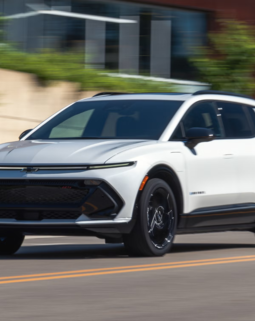Globally, the future of automobiles is electric, thanks to a growing number of governmental initiatives, including upcoming sales bans on internal combustion engines (ICEs), changing customer behavior, and continued advancements in hybrid and electric vehicles technologies. As a result, the world's largest automotive markets like China, the EU, and the United States will completely transform towards the sale of only Electric Vehicles, with electric vehicles accounting for 80 percent of global vehicle sales by 2050. Moreover, electric vehicles are essential for reaching environmental protection targets and enhancing life in cities by improving the Air Quality Index. But, in Sub-Saharan Africa, how will this tendency play out? What are the advantages and disadvantages of the region's electric transportation future?
Let’s look at the outlook of sub-Saharan Africa’s transport industry and analyze the region’s readiness to accept electric vehicles.
Presently, the transport sector contributes to around 10% of Africa’s carbon emissions. This is expected to rise as the continent's vehicle park expands. The number of cars is expected to grow exponentially from 25 million vehicles today to an estimated 58 million vehicles by 2040 in Uganda, Rwanda, Ethiopia, South Africa, Nigeria, and Kenya. These six countries contribute to around seventy percent of sub-Saharan Africa’s vehicle sales. Also, around forty-five percent of sub-Saharan Africa’s population live in these six countries.
Sub-Saharan Africa is facing some specific problems to transform completely towards electric vehicles. Some of these issues include intermittent electricity supply, the low buying power of the populace, and the ever-growing second-hand cars industry. However, a study indicates that the region is developing a burgeoning ecosystem focusing on electric vehicles, especially two-wheelers.
Some Sub-Saharan African governments are encouraging the electrification of vehicles by providing different incentives. One of the examples of such governments is Rwanda. The Rwandan government has offered tax breaks for electric vehicle purchases. Furthermore, different startups in Rwanda are trying to capitalize on the increasing demand for electric two-wheelers in the region. As a result, they are investing in manufacturing affordable electric two-wheelers to meet the demands of the local and regional markets.
It is expected that Kenya and Rwanda will make a faster transition toward electrification. Their sale of electric vehicles, especially two-wheelers, is forecasted to capture seventy-five percent of the market share. However, this forecast depends on various variables, including Kenya's stricter regulations on the import of secondhand vehicles, Rwanda's EV adoption incentives, and these countries' comparably higher electrical reliability.
Electric Vehicles (EVs) will significantly transform the transport sector of the sub-Saharan region. However, EVs are not bound to electric cars only. Instead, it includes every category of vehicle across every segment. At the same time, the rate and scope of change will vary. Therefore, for the betterment of the region’s ecosystem and a smooth transition towards electrification, a public-private partnership is essential.
Failure to develop a concrete policy for electrification might result in the region being a dumping ground for second-hand vehicles, putting the continent's environmental protection goals at risk.





